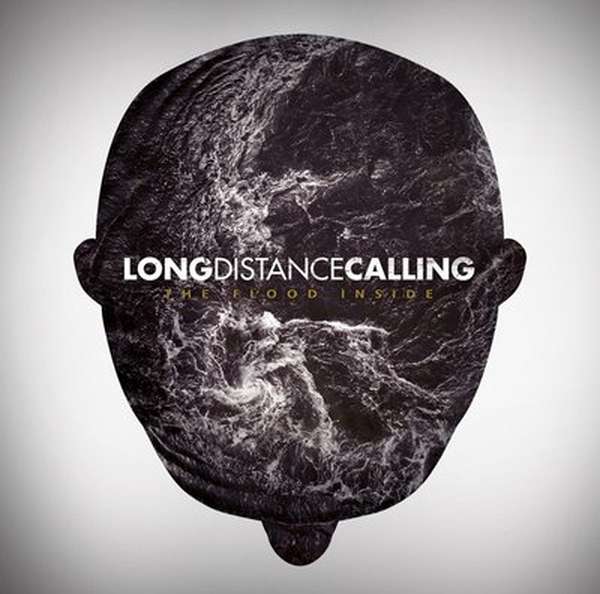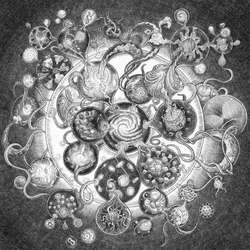German rockers Long Distance Calling have always occupied an interesting musical space—though they started out unabashedly as a post-metal act, their slow slide into post-rock has been so slow that, by the time their eponymous third album was released, almost no one noticed the difference. And that's part of what makes their newest album, 2013's The Flood Inside, so intriguing—the shift into post-rock can no longer be ignored.
To be honest, I'm being a bit generous in using the term post-rock. That's because a lot of the tracks on this album sound more akin to hard rock incidentally sans vocals than post-rock in the pure. That's also signified by the general shortening of their tracks; gone entirely are the longer progressive excursions, replaced by nice, medium-sized chunks of digestible rock. And while they still haven't gone soft, the musical space they occupy is now firmly in the heavily ambiguous grey area where rock meets metal, defying easy classification.
Another change in their sound that's hard to ignore is the addition of a full-time vocalist. The vocal tracks are no longer the token one-offs on their albums—a full half of the tracks on The Flood Inside now include vocals. What's odd about that is that only three of those feature the band's new vocalist Martin Fischer—despite having a vocalist on the band roster, they still managed to find space for a guest to sing.
Actually, it's worth pointing out that The Flood Inside features not one, but six guest musicians. Robot Koch, Alex Komlew, and Mario Cullmann (Fünf Sterne deluxe) provide guest electronics work, Petter Carlsen and Vincent Cavanagh (Anathema) provide guest vocals, and blues guitarist Henrik Freischlader guests on, you guessed it, guitar.
I know what you're probably thinking: how do Long Distance Calling manage to find time for their own music when they're making space for so many guests to show off? And the answer to that question, disappointingly, is that they don't. The biggest problem with The Flood Inside is that it's not actually a Long Distance Calling album; it's an album of individual musicians with Long Distance Calling playing backup. The tracks that feature the guest musicians are leagues better than the token few that feature the band alone, and that really throws my perceptions of the album way out of whack.
Take the opener “Nucleus” for example. This is probably the strongest track of the entire album (hell, of their entire career), but the band's performance is merely okay. What makes the track as amazing is Freischlader's incredible two-plus minute blues solo over the second half of the track, completely blowing away the rest of the band with his amazingly sensitive performance. “Waves” is another great example. The track is entirely about Mario Cullmann's fantastic electronics work—everything the band themselves have to say is completely incidental to his performance. By way of contrast, tracks like "Ductus" and "The Man Within" that feature the band alone are—and there's no kind way to say this—boring.
Fans of Long Distance Calling will still like The Flood Inside because, honestly, it's still a really good album. But what irks me is that it's not a good album because the band made it that way—it's a good album because they got great performers who pulled it up on all on their own. I'm still going to recommend listening to this, but understand that it frustrates me heavily to do so.
Recommended if you like: Leech, UpCDownC, Toundra


